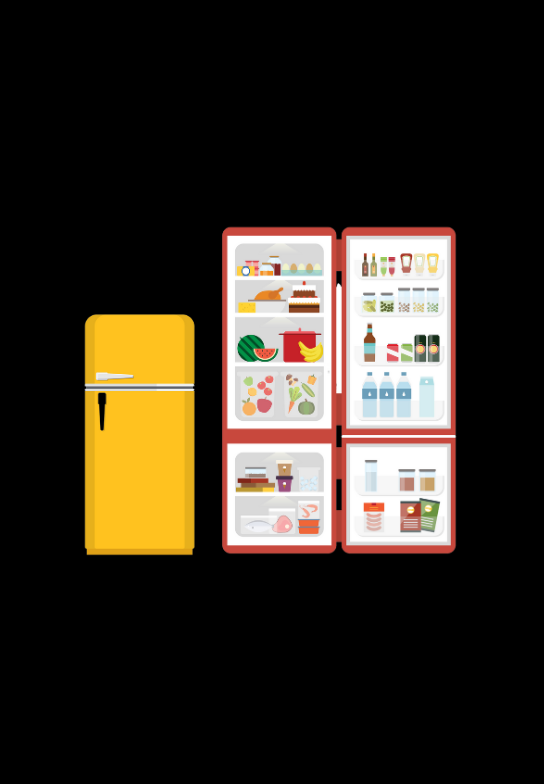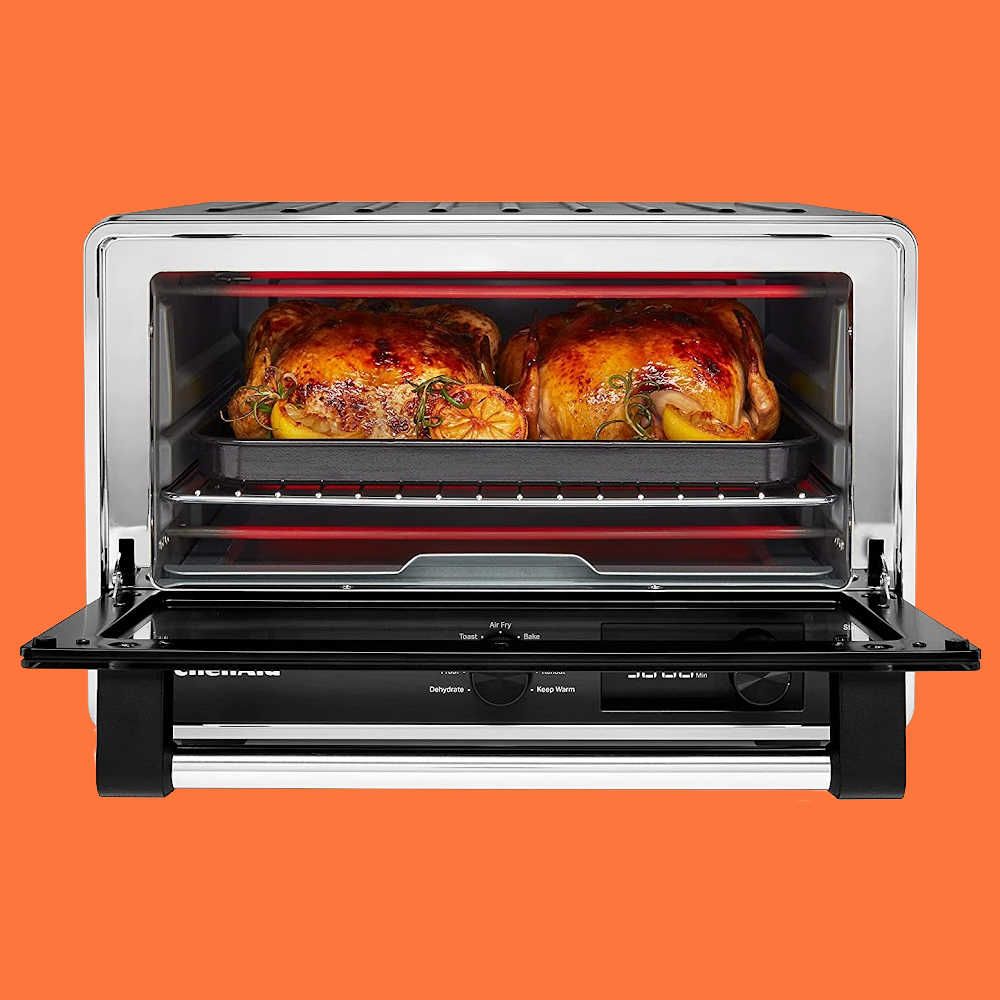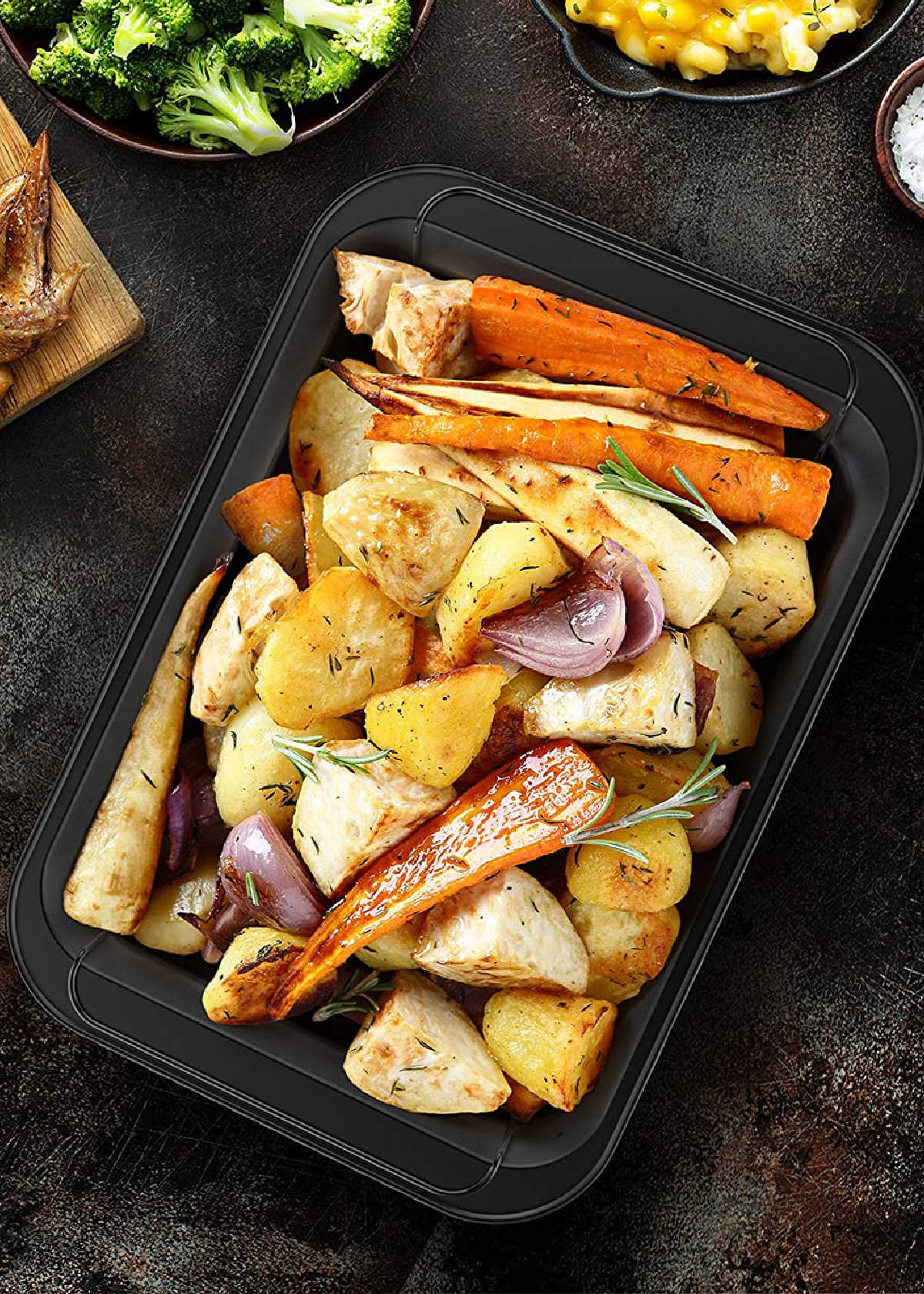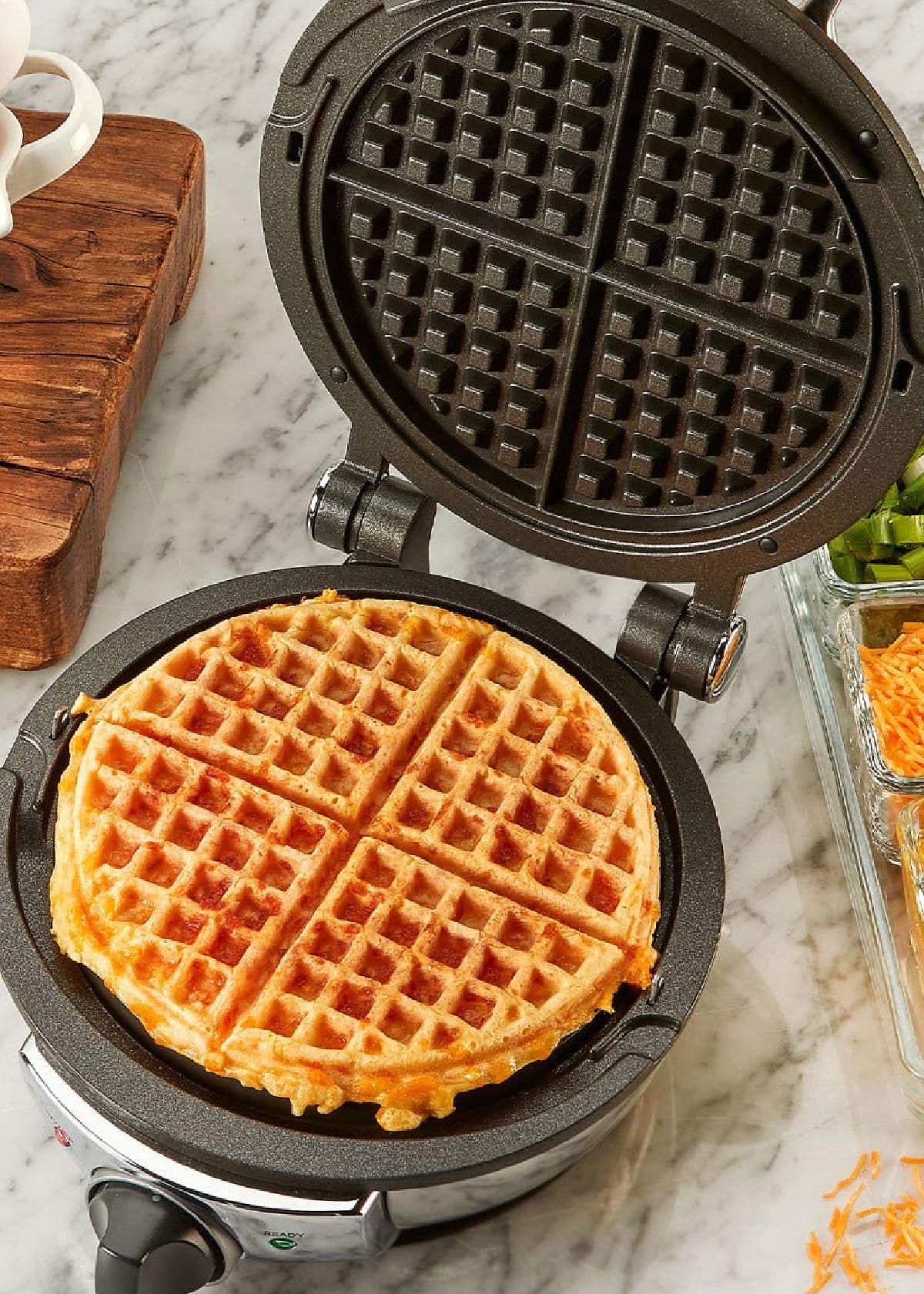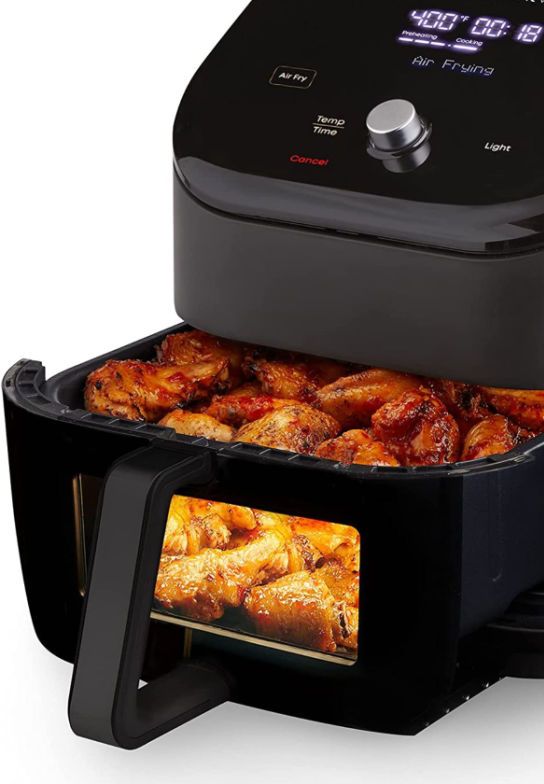Content Summary
With the various options available these days, choosing the right refrigerator can be overwhelming. This raises the question: should you go for a regular fridge or a mini fridge?
In this quick guide, we will compare both mini-fridges and regular fridges, highlighting the pros and cons of both, to help you make a well-informed decision.


When deciding between a mini fridge and a regular fridge, it all boils down to your specific needs.
If you have a limited budget and a small apartment, tiny home, or dorm room, a mini fridge would be ideal as it saves up on your space and electricity bill.
If you have a large family, a lot of food to store, or prefer features and durability, a regular fridge would serve you better due to its vast storage capacity and numerous features.
Mini Fridge vs Regular Fridge
Let's start with the basics.
- A regular fridge is a full-sized refrigerator that is typically 36 inches wide, 30 inches deep, and 70-79 inches tall, with a capacity of 20 to 32 cubic feet.
- A mini fridge, on the other hand, is a compact refrigerator that is usually 24 inches wide, 20 inches deep, and 35-40 inches tall, with a capacity of 1.6-4.5 cubic feet.


1. Mini Fridge
Pros
- Takes up less space
- More energy efficient
- Affordable
- Lightweight / portable
Cons
- Limited storage capacity
- Minimal features
- Often lacks a freezer
- Less durable than regular fridges
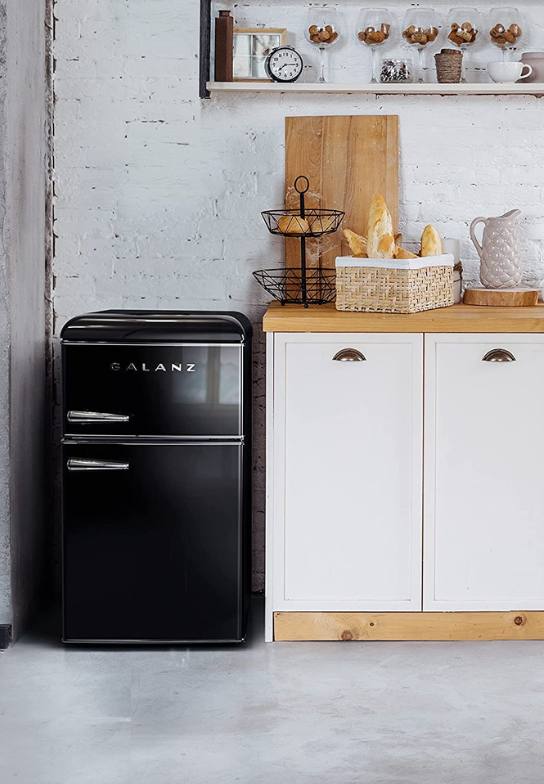

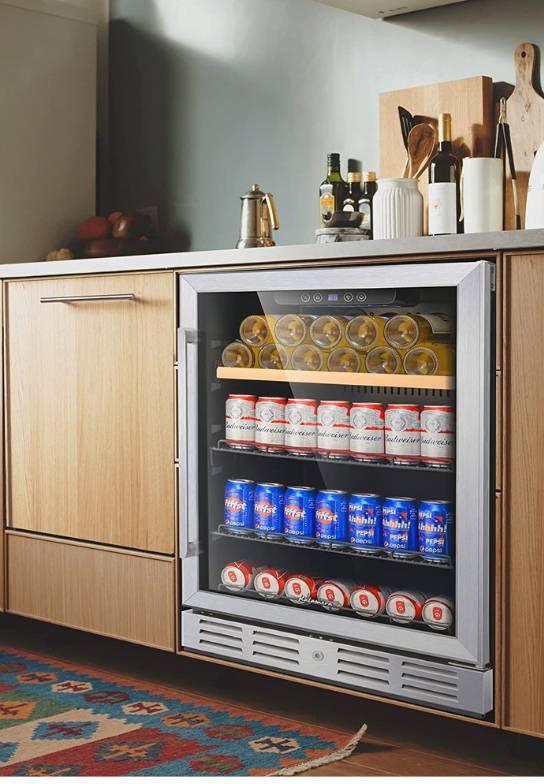

2. Regular Fridge
Pros
- Large storage capacity
- Comes with numerous features
- Most have a separate freezer compartment
- Long-lasting
- Easier to clean
Cons
- Bulky and requires plenty of space
- Costly to purchase and maintain
- Less energy efficient
- Difficult to move


Which One To Choose?
Always consider the size, capacity, features, temperature controls, how many watts (energy efficiency; energy star certified), maintenance, durability, and budget before making this investment.
Factors To Consider
1. Size Matters
The most obvious difference between a mini fridge and a regular fridge is the size.
- A mini fridge is typically under 5 cubic feet, while a full-size (regular) fridge can range from 18 to 32 cubic feet or more.
- Mini refrigerators are perfect for small spaces, such as a tiny house, a small kitchen, a dorm room, or an office, or as an additional fridge for food, snacks, and drinks. A mini fridge can be a great space-saving option. They are also great for personal use and can be conveniently transported wherever you go.
- A regular refrigerator is a better option for larger families, large kitchen spaces, and people who do a lot of cooking or love to host regular dinner parties. Besides, it is fit for keeping cold snacks and storing frozen items. But keep in mind that full-sized refrigerators mean higher energy bills.
2. Temperature Control
One of the advantages of a regular fridge is its temperature control.
- A regular fridge comes with a dial or a digital thermostat that allows you to adjust the temperature to your preferred setting. You can store all types of food and beverages, including meats, dairy products, fruits, and veggies.
- A mini fridge, on the other hand, has limited temperature control and can only cool to a certain degree. You can store beverages, snacks, and some small food items, but not big or heavy ones. Exception: Mini fridges with freezer compartments have of course more cooling capacity.
3. Features
Mini fridges may not have as many features as regular fridges, but they’re not far behind. If you’re someone who wants all the bells and whistles, a regular fridge is the way to go.
- Regular fridges come with a range of features, such as adjustable shelves, drawers, a temperature-controlled drawer, a dual-zone feature, an ice maker, and a water dispenser.
- Some models even come with smart Wi-Fi connectivity, so you can control the temperature remotely. Some even have a built-in can dispenser or a wine rack.
- Mini fridges usually don’t come with many features since they are designed for convenience rather than luxury. They may have two or four shelves and a small freezer.
4. Maintenance
Both mini and regular, full size refrigerators require maintenance. Consider the materials and construction of the fridge, and ensure it can withstand frequent usage. A mini fridge might not last as long as a regular fridge, and repair costs can be more expensive.
- Regular fridges require more upkeep. For example, cleaning the coils, defrosting the freezer, and changing the water filter are tasks that need to be done regularly for regular fridges.
- Mini fridges - including beverage coolers - require less maintenance, with customized, compartmental cleaning that is easy to manage.
5. Energy Efficiency
- A mini fridge is more energy-efficient than a regular fridge because it uses less energy to cool a smaller space. If you are living in a small space and you’re concerned about your carbon footprint and want to save money on energy bills, a compact fridge is a better option.
- A regular fridge uses more energy because they’re larger, has more features, and needs to maintain a consistent temperature throughout the entire fridge. However, if you have a large fridge and only fill it with a few items, it can be less energy-efficient in the long run.
- Check the energy rating: one aspect should not be overlooked: some cheaper regular fridges have low-quality isolation, while some more costly mini fridges have adequate isolation. That's why it's essential to check the energy rating.
6. Cost
Mini-fridges are less expensive, but the features are more limited, whereas regular fridges are costly but offer numerous features.
- A mini fridge, if you are on a budget, is generally more affordable than a regular fridge. Compact fridges can cost anywhere between $50 to $600, depending on the brand, features, and size.
- A regular fridge can cost upwards of $1,000- to $2,000, or more, depending on the brand, features, size, model, capacity, and energy efficiency.
7. Convenience
Consider your lifestyle and convenience when choosing between a mini fridge vs regular fridge.
- If you need a small fridge for your bedroom, office, or dorm rooms, a mini fridge will be more practical. You can store drinks, snacks, food, and leftovers close at hand, without having to go to the kitchen every time.
- When you will only use a mini fridge for drinks, consider choosing a beverage cooler.
- However, if you love to cook, entertain, and store all types of food items, freeze meals, and groceries, a regular fridge is essential. If you’re someone who needs a lot of storage space, a regular fridge is a better investment in the long run.




Mini Fridges & Regular Fridges FAQs
Are mini-fridges as cold as normal fridges?
Unless they have a freezer, mini fridges are not as cold as regular fridges. Mini fridges can typically only get as cold as 32-40 degrees Fahrenheit, whereas regular fridges can reach temperatures of 0-37 degrees Fahrenheit.
While this is colder than necessary for most food items, certain foods require a colder temperature, such as ice cream and meats. These items should be stored in a regular fridge for optimal freshness and safety.
Is a mini fridge cold enough for food?
A mini fridge can be cold enough for food. However, certain foods require temperatures lower than what a mini fridge can provide.
For example, foods like meats and ice cream require temperatures lower than 32-40 degrees Fahrenheit.
Some mini fridges have a tiny freezer unit that will go down to 0 degrees Fahrenheit, but this means there is even less space for food and beverages.
Therefore, it is best to store these types of food in a regular fridge for optimal freshness and safety.
Can I store chicken in mini fridge?
It is not recommended to store chicken in a mini fridge. A mini fridge cannot reach the temperatures required for the safe storage of poultry (or other meats).
It is best to store chicken in a regular fridge where it can reach temperatures of 0-32 degrees Fahrenheit. This will help ensure the safety and freshness of the chicken.
Can you keep groceries in a mini fridge?
You can keep groceries in a mini fridge as long as they are items that don’t require temperatures lower than 32 degrees Fahrenheit.
Snacks, leftovers, and beverages are the most common items stored in mini-fridges, but you can also store other food items such as fruits and vegetables.
How long does food last in a mini fridge?
Food stored in a mini fridge typically lasts between 1 week - 10 days. This depends on the type of food and how it’s stored. For example, foods like dairy products and meats should be consumed within 1-3 days of being stored in the fridge as they are more prone to spoiling.
However, if you’re storing non-perishable items like canned goods and snacks in the mini-fridge, they can last up to 30 days or more (check the label).
It is important to note that food stored in a mini-fridge may not last as long as food stored in a regular fridge, since the temperature in mini-fridges cannot reach as low as 0 degrees Fahrenheit as regular fridges can.
Tips & Tricks
- Before buying either a mini or regular fridge, measure the space where you plan to install it. Always include a space of 1-2 inches around the back and sides for ventilation.
- Check the energy rating of the fridge to ensure that your purchase is as energy efficient as possible.
- Be sure to do research and read reviews about the model you’re interested in before purchasing.
- Make sure that the features are suitable for the type of food that you plan to store.
- For best results, look for a fridge with adjustable shelves and temperature controls.
- When buying a regular fridge, take into account all the features and extras that come with it, such as temperature settings, storage shelves and drawers.
- If you’re looking for a mini fridge, consider investing in one with wheels or handles so it can be transported easily.
Need help to find the best mini fridge? Check out the below blog post for our buying guide and top product picks.
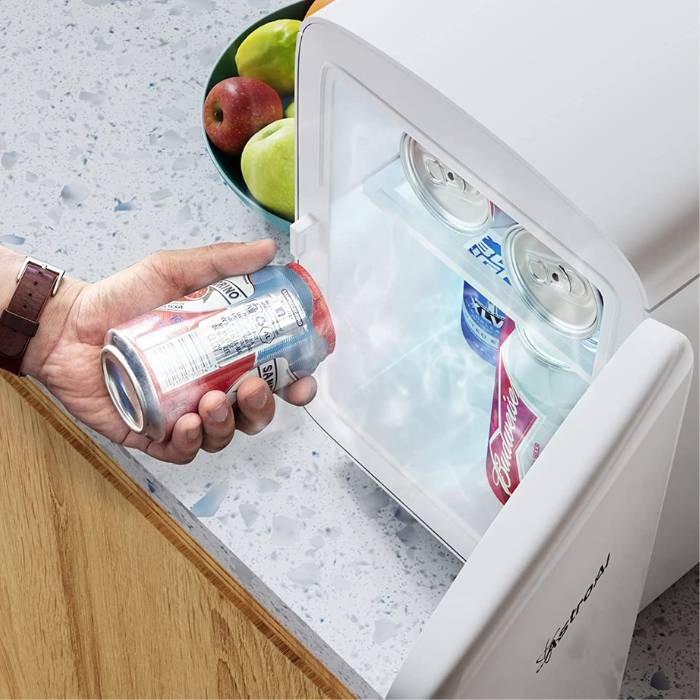
We hope that this article has helped you make informed decisions about which type of fridge to choose and that you can enjoy your fridge for many years to come.
Happy cooling!
Catchy Finds

